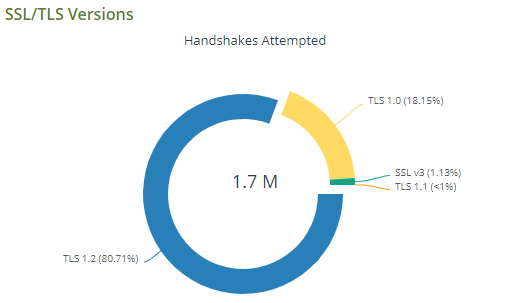2020 was a year of change, much of it unanticipated as the COVID-19 pandemic swept across the planet.
The massive surge in work-from-home (WFH) affected hundreds of millions across the globe as more than half of the workforce was forced to shelter in place. IT teams toiled to get team members up, running, and secure in their WFH environments—wherever that might be.
Keeping their WFH teams productive became priority one—overnight. Only 67% of IT executives say this transition was smooth.[1] The smoothest transitions came from companies in technology, finance and business services sectors where they already had a high deployment of cloud apps and remote workers.
One of the surprising side effects of COVID-19 is that it is reinforcing the value of technology and potentially reshaping the work environment. In fact, 60% of IT executives believe COVID-19 will make their organizations more reliant on IT,[2] while 95% of business leaders report being comfortable with remote work and anticipating more of it in the future.[3]
Improvements Required for Remote Work
However, many IT improvements are still required for ongoing operations and the security of employees, wherever they decide to work. On-premises data centers will feel the long-term impact of COVID-19 and its emphasis on arms-length operations. According to the Riverbed Future of Work Global Survey, based on 700 respondents, plans include the greater use of public cloud services to replace data center infrastructure and improving visibility to manage hybrid application and network performance.
Also not surprisingly, organizations will increase their budget for cybersecurity products and services. Cybersecurity is always a top contender. However, this year they are responding not only to the increased number of remote workers accessing corporate data from offsite locations—raising concerns about network security, stolen devices, and data encryption—but also the increased threat level due to the rise in cybersecurity attacks attributed to COVID-19.
As a result of these trends, Riverbed announced new Unified NPM capabilities, which were showcased at the Riverbed Global User Conference 2020. Riverbed’s unified NPM solution makes it easier than ever to ensure application performance, network security and user experience across the hybrid IT landscape:
New Cloud and HA Deployments
Riverbed Unified NPM has long offered hybrid-normalized visibility, providing the same industry-leading visibility across on-premises, cloud, hybrid and multi-cloud environments. Our network flow monitoring lets you discover applications, hosts and conversations inside the cloud. It also helps you identify usage by VPCs, regions, and availability zones. This detailed visibility helps minimize costs by reducing inefficient or unnecessary traffic and lets you build more efficient cloud architectures.
What’s new is that you can now also deploy Riverbed NetProfiler, Flow Gateway and NetIM in the cloud (remember AppResponse Cloud is already deployable in the cloud). These solutions run in AWS, AWS GovCloud, Azure and Azure Government with all the bells and whistles of the on-premises version. Additionally, NetIM offers robust High Availability (HA) capabilities to ensure that real-time insight into the health and performance of IT infrastructure is reliable and always accessible.
Increased Insight into Encrypted Traffic
Nearly 90% of all Internet traffic is encrypted[4]—and it won’t be long before nearly all Internet in transit will be secure. While this is great for privacy, it creates significant security blind spots. By leveraging encryption, attackers can bypass most inspection tools to deliver malware into the network. In fact, 71% of malware uses encryption to communicate secretly to command and control locations.[5]
To solve this challenge, Riverbed has introduced two new capabilities:
- A new PFS (Perfect Forward Secrecy) API allows Riverbed symmetric key intercept integrations with two partners: Nubeva and The Load Balancer Crew (LBC). This technology allows Riverbed AppResponse users to gain visibility into TLS encrypted application traffic for use in performance and security analysis.
- New TLS Analysis Insight reports for Riverbed AppResponse lets your users track, report and validate the integrity of SSL and TLS sessions, certificates and cipher suites for easy key maintenance and improved security.

To read more about these capabilities, check out this blog Riverbed AppResponse Adds TLS Analysis and PFS API.
New Behavioral Analytics of Packets, Apps & Users
Lastly, a new set of powerful capabilities makes it easier for you to understand what is most important about your network by bringing relevant insights to the surface.
AppResponse Adaptive Thresholds use behavioral analytics to automatically detect and flag abnormal changes in server response times and total throughput. These new capabilities reduce the noise and overhead associated with unimportant or unactionable alerts so you won’t have to fiddle to find that perfect threshold. AppResponse does all the work for you, continuously. It’s always learning what’s normal, which means it proactively detects abnormal conditions, giving you early warning that something is amiss.

To read more about AppResponse Adaptive Thresholds, try this blog New AppResponse Adaptive Thresholds Reduces False Positives.
AD Connector 3.0 extracts user identity information from an Active Directory source, pulls it into Riverbed NetProfiler and makes it available for use within reports. Being able to resolve to the user name is useful for troubleshooting both security and performance problems, which is especially helpful when monitoring work-from-home environments.
See the related blog: NetProfiler Users Are More Than a Number With AD Connector 3.0.
Finally, NetProfiler expanded its integration with Riverbed SteelHead with support for custom application groups and enhanced reporting of inbound Network QoS (in addition to the already supported outbound QoS). These help you find and fix performance issues with a unified platform.
There’s a blog on this topic, too: Add Visibility to Your SteelHead to Optimize Network Performance.
To learn more about the Riverbed Unified NPM solutions, you can go to www.riverbed.com/npm.
[1] ESG, The Impact of the COVID-19 Pandemic on Remote Work, IT Spending, and Future Tech Strategies, 2020
[2] ESG, The Impact of the COVID-19 Pandemic on Remote Work, IT Spending, and Future Tech Strategies, 2020
[3] https://lp.buffer.com/state-of-remote-work-2020
[4] F5, Detect Encrypted Malware, 2020
[5] F5, Detect Encrypted Malware, 2020
